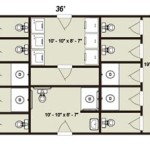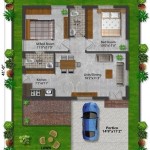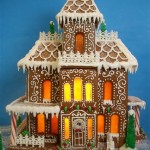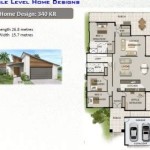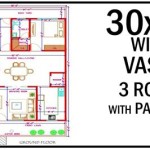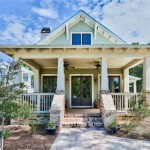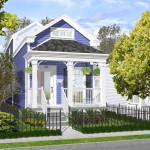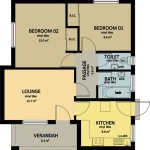Inexpensive A-Frame House Plans in Germany
The A-frame house, with its distinctive triangular shape, has experienced periods of popularity throughout architectural history. Its simple design offers potential cost savings in construction, making it an attractive option for those seeking affordable housing solutions, particularly in a market like Germany where construction costs can be significant. This article will explore the viability of inexpensive A-frame house plans in Germany, considering factors such as design considerations, material choices, regulatory compliance, and potential challenges.
The appeal of the A-frame house stems from its inherent structural efficiency. The load-bearing walls form the roof, reducing the need for separate roofing structures and supporting beams. This simplicity can translate into lower material costs and reduced labor time. Furthermore, the distinctive aesthetic of the A-frame provides a unique living space that resonates with individuals seeking an alternative to conventional rectangular homes.
However, building an A-frame house in Germany requires careful consideration of local building codes, energy efficiency standards, and the specific climate conditions. While the basic concept of an A-frame is straightforward, adapting it to meet German regulatory requirements and ensuring long-term comfort and durability necessitates a well-considered plan.
Design Considerations for Cost-Effective A-Frame Construction
Optimizing the design is crucial for minimizing costs in an A-frame project. The size and scale of the structure directly impact material requirements and labor expenses. A smaller, more compact design will generally be more economical to build than a larger, multi-story A-frame.
The pitch of the roof, the angle of the "A," also influences cost. A steeper pitch might require more material but can provide additional headroom on the upper level. A shallower pitch, conversely, uses less material but may limit usable space. Finding the optimal balance between material usage and interior space is an important design consideration.
Internal layout also contributes to cost-effectiveness. Open-plan designs minimize the need for interior walls, simplifying construction and reducing material needs. Utilizing vertical space efficiently through features like lofts can maximize living area without increasing the overall footprint of the house.
Standardization of dimensions is another key principle. Using readily available, standard-sized building materials reduces the need for custom cuts and minimizes waste. This applies to framing lumber, sheathing, insulation, and interior finishing materials. Selecting a design that incorporates standard dimensions can significantly decrease material costs.
Finally, considering the location of windows and doors is essential. While large windows can enhance the aesthetic appeal of an A-frame and provide natural light, they also increase material costs and can impact energy efficiency. Careful placement of windows to maximize natural light while minimizing heat loss in winter and heat gain in summer is crucial for long-term affordability.
Material Choices and Their Impact on Affordability
The selection of building materials plays a significant role in determining the overall cost of an A-frame house. Opting for locally sourced, readily available materials can reduce transportation costs and potentially lower material prices. Understanding the properties and durability of different materials is also crucial for ensuring long-term structural integrity and minimizing maintenance expenses.
Wood is a common and often cost-effective choice for A-frame construction. Timber framing, using sustainably sourced lumber, can provide the structural framework for the house. The specific type of wood will influence its cost and durability. Softwoods like pine and fir are generally less expensive than hardwoods but may require more frequent maintenance or protective treatments.
Sheathing materials, used to cover the exterior frame, also influence cost. Oriented strand board (OSB) is a common and relatively inexpensive option, but it requires proper sealing and protection from moisture. Plywood is another choice, offering greater resistance to moisture damage but typically at a higher price point.
Insulation is critical for energy efficiency in Germany's climate. The choice of insulation material significantly impacts heating and cooling costs. Options include fiberglass batts, mineral wool, spray foam, and cellulose insulation. Each material has its own cost and performance characteristics. Factors such as R-value (thermal resistance), ease of installation, and environmental impact should be considered.
Exterior cladding materials protect the exterior sheathing from the elements and contribute to the aesthetic appeal of the house. Options include wood siding, metal siding, vinyl siding, and stucco. Each material has a different cost, durability, and maintenance requirements. Selecting a durable and low-maintenance cladding material can minimize long-term expenses.
Interior finishing materials, such as drywall, flooring, and paint, also impact the overall cost. Opting for budget-friendly options for interior finishes can help control expenses without compromising functionality. For example, using laminate flooring instead of hardwood, or choosing affordable paint colors, can reduce costs.
Navigating German Building Codes and Regulations
Building an A-frame house in Germany requires strict adherence to local building codes and regulations. These regulations cover various aspects of construction, including structural integrity, energy efficiency, fire safety, and accessibility. Compliance with these regulations is mandatory and can impact the design and material choices for the A-frame house.
The Energieeinsparverordnung (EnEV) is a key regulation governing energy efficiency in Germany. It sets minimum requirements for insulation, heating systems, and ventilation. Meeting these requirements is essential for obtaining building permits and ensuring the long-term energy performance of the house. The EnEV has been replaced with the Gebäudeenergiegesetz (GEG), which further strengthens energy efficiency requirements for new buildings.
Fire safety regulations are also stringent in Germany. The building codes specify requirements for fire-resistant materials, smoke detectors, and escape routes. The design of the A-frame house must incorporate these fire safety measures to ensure the safety of occupants.
Structural regulations dictate the strength and stability of the building. The A-frame design must meet these regulations to withstand wind loads, snow loads, and other environmental factors. This may require specialized structural analysis and engineering to ensure the house is structurally sound.
Accessibility regulations may also apply, depending on the intended use of the A-frame house. If the house is intended for rental or sale, it may need to meet accessibility standards for individuals with disabilities. This may involve providing ramps, wider doorways, and accessible bathrooms.
Obtaining the necessary building permits can be a complex and time-consuming process. It is advisable to consult with a local architect or building contractor who is familiar with German building codes and regulations. They can assist with the permitting process and ensure that the A-frame design meets all applicable requirements.
Furthermore, it's important to consider local zoning regulations, which may restrict the type of buildings allowed in specific areas. Zoning regulations can dictate setbacks, height restrictions, and other limitations on construction. Checking with the local building authority about zoning regulations before starting the project is crucial.
The German approval procedure requires detailed construction drawings. The drawings must include all planning and design information required for construction approval. They are usually prepared by a qualified planner and are reviewed by the building authority.
The entire process, from planning to completion, will require professional input. Engaging with qualified architects, structural engineers, and experienced construction workers is essential for a successful and compliant A-frame build within the German regulatory framework.

A Frame Houses Nomadic Homes

Free E Book Guaranteed Building Plans 200 House 2 A Frame Of Cabins

Triangular House A Shaped Hut Frame 2 Project

Triangular House A Shaped Hut Frame 2 Project

Building An A Frame Cabin In 3 Days Our Prefabricated Kit Journey

Building An A Frame Cabin In 3 Days Our Prefabricated Kit Journey

A Frame House Plans Small Den

A Frame Tiny House Plans Floor

A Frame House Plans Small Den

Building An A Frame Cabin In 3 Days Our Prefabricated Kit Journey

